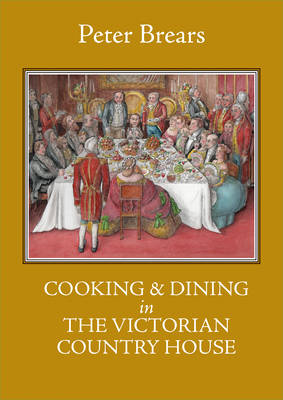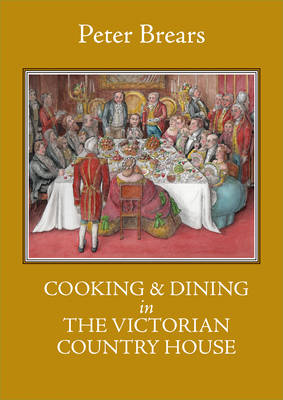
Je cadeautjes zeker op tijd in huis hebben voor de feestdagen? Kom langs in onze winkels en vind het perfecte geschenk!
- Afhalen na 1 uur in een winkel met voorraad
- Gratis thuislevering in België vanaf € 30
- Ruim aanbod met 7 miljoen producten
Je cadeautjes zeker op tijd in huis hebben voor de feestdagen? Kom langs in onze winkels en vind het perfecte geschenk!
- Afhalen na 1 uur in een winkel met voorraad
- Gratis thuislevering in België vanaf € 30
- Ruim aanbod met 7 miljoen producten
Zoeken
€ 59,45
+ 118 punten
Omschrijving
For centuries the food cooked in the country houses of Britain was the finest available, but during the reign of Queen Victoria (between 1837 and 1901), Britain experienced a period of development and expansion virtually unparalleled elsewhere or in any previous era. Based on technology and commerce, its home industries and Empire enterprises produced boundless wealth for the upper and middle classes, enabling them to adopt one of the most luxurious, ostentatious and materially rich lifestyles of all time. This was not only expressed in its fne arts, its architecture, its furnishings and its dress, but also in its tableware and food. The expansion of the empire and aggressive international trade in the Victorian period also meant that new ingredients became available for the first time. Today it is almost inconceivable that numerous families could aford to build, equip and staff a full-scale top-quality hotel restaurant purely for themselves, but this is what they did. It took an investment equalling hundreds of thousands of pounds in today's currency, but produced the quality of lifestyle that can now only be partially experienced in their modern equivalents, the top international hotels. Members of noble and gentry families were brought up to appreciate and demand the very best of domestic services. These included the produce of game, fsh, meat, cereals, fruits and vegetables from their estates and gardens, but went on to be demonstrated in the pristine whiteness of their fne linens, the high polish of their massive family silver, the correctness of their behaviour and manners, and especially the quality, favour and presentation of their meals. All of these, along with many other services were considered essential for the maintenance of their refned, cultured lifestyle. Establishing these standards before the introduction of modern laboursaving devices required the employment of a large, well-trained and experienced workforce. Not only was this a practical necessity, but it also served as a powerful visual representation of a family's wealth and status. With annual incomes well in excess of 40,000 a year, the wealthiest nobles and commoners often employed an indoor staf of thirty or more This great culinary tradition began its decline around the time of the First World War, and collapsed with the outbreak of war in 1939. Now, over eighty years later, it remains forgotten, as even those who experienced its final stages have passed away. Hopefully this definitive study will go a long way in reviving interest in it, and encouraging further appreciation and enjoyment of all its diverse aspects. Peter Brear's magnus opus is supplemented with numerous scale drawings of structures, fixtures and utensils, made over the course of over thirty years of his fieldwork working in historical houses.
Specificaties
Betrokkenen
- Auteur(s):
- Uitgeverij:
Inhoud
- Aantal bladzijden:
- 526
- Taal:
- Engels
Eigenschappen
- Productcode (EAN):
- 9781909248793
- Verschijningsdatum:
- 1/09/2023
- Uitvoering:
- Hardcover
- Formaat:
- Genaaid
- Afmetingen:
- 175 mm x 246 mm
- Gewicht:
- 1065 g

Alleen bij Standaard Boekhandel
+ 118 punten op je klantenkaart van Standaard Boekhandel
Beoordelingen
We publiceren alleen reviews die voldoen aan de voorwaarden voor reviews. Bekijk onze voorwaarden voor reviews.









